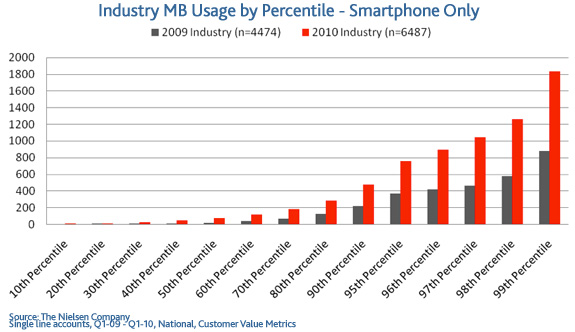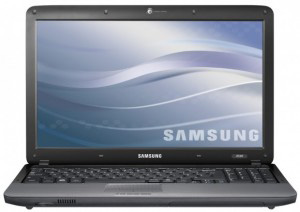Solid State Drives: The Next Hard Drive Standard
For decades now, computer systems the world over have been using one form of hard drive most extensively: the Hard Disk Drive. This form of data storage relies on a magnetic disk which is spun rapidly while it has data written to it by a mechanical disk head. As time has worn on, these hard drives have grown in capacity almost exponentially, while prices have come down at a nearly constant rate.
However, in recent years, a newer type of hard drive has begun to see prevalent use among the higher-end business and performance PC markets: the Solid State Drive. This newer variety of drives is referred to as “Solid State” because of the fact that it relies on silicon memory cells rather than a mechanical disk assembly, and thus has no moving parts. This technology is akin to much more common forms of portable storage, such as SD and Compact Flash cards used in cameras and phones, as well as USB Flash Drives.
Despite how radically different they are, the two types of drives are built to achieve the same purpose, and that is the long term storage of programs, documents, files, and the operating system itself. However, by virtue of their differing design philosophies, Solid State Drives tend to perform differently from Hard Disk Drives, and have a number of advantages and disadvantages when compared to their older peers.
Advantages
Performance
A computer is only as fast as its slowest part. With processors that are tens or even hundreds of times more capable of handling vast and complicated tasks than those of years and decades past, and RAM that is not only faster but more plentiful than ever before, it really comes down to how quickly one can put work on the table. When most people think of “speed” on their computers, they think most often of how long it takes for the computer to start, how long after that before the programs of their choosing will open, how quickly said programs respond, and how long it takes to save or move around their work once it is completed.
The average computer running Windows 7 with a mechanical Hard Disk Drive can take upwards of a couple minutes to start and become usable, depending largely on how many programs are starting with the computer. Larger programs, such as Adobe Photoshop, Sony Vegas, or even Microsoft Office can take fairly long as well, depending on their size. With a Solid State Drive, starting Windows usually takes seconds where it would have taken minutes, and most programs open nearly instantaneously. Besides this, saving large files and projects, as well as transferring such documents to other folders, and even installing programs or Windows updates will take far less time.
Size and Weight
Less of a concern for desktop and workstation users, Solid State Drives are frequently installed in Ultrabooks and other highly portable devices where size and weight are a concern. Needless to say, a few silicon wafers is bound to weigh a lot less than a metal disk and motor assembly. Besides this, many Solid State Drives bound for Ultrabooks and tablets are also manufactured smaller and thinner than other Solid State Drives or conventional laptop hard drives, allowing for more room for other components and a thinner design. A very well known example of successful implementation of this strategy is in Apple’s MacBook Air line of laptops.
Power Consumption
Once again, although not a concern with desktops or workstations, Solid State Drives tend to use less power than their counterparts, thanks to the fact that they don’t have to spin a disk at several thousand rotations per minute to operate. This can result in a small bonus in battery life in laptops, and once again owing to their smaller size requirements in Ultrabooks, potentially allow for larger batteries to be incorporated in the design. The new ultrathin, ultralight models of laptops launching lately, including the Lenovo Yoga Pro 3 and the MacBook (2015) are extreme examples of this, where nearly the entire chassis is filled with the battery and only a small area is left for the Motherboard and the Solid State Drive.
Heat Generation
Heat is a computer’s worst enemy, yet ironically it is something it generates even from running idle. Excessive heat increases wear and tear on a computer’s internal components, and in extreme circumstances, can shorten its lifespan or cause serious damage. Keeping computer systems cool is such a constant concern for product designers and computer engineers, that an entire industry has been built around computer cooling alone. Although it’s not a tremendous amount, Hard Disk Drives tend to generate a reasonable amount of heat, whereas Solid State Drives are relatively cool running.
Durability
One of the biggest failure points of mechanical Hard Disk Drives is their lack of shock resistance. A drop, an impact, or even a jostle can cause part of the drive to lose alignment or stop functioning, and worst case scenario, all the data on it becomes irretrievable. Solid State Drives, thanks to the fact that they possess no moving parts, have a good deal of shock resistance and can usually survive a fall without losing data.
Fragmentation
Solid State Drives, thanks to the fact they store data differently from Hard Disk Drives, never become fragmented. Thus, they do not tend to experience the same slow down over time as most drives do, and do not need to spend long hours defragmenting themselves to run efficiently again. Most current operating systems and programs dedicated to this purpose are smart enough to know not to try to defragment a Solid State Drive, but for those that are not, the user must know that it is not only a waste of time, but may also corrupt some information on the drive.
Disadvantages
Cost to Storage Ratio
The fact of the matter is, with Solid State Drives as relatively new as they are, they are still fairly expensive. Dollar per Gigabyte, mechanical Hard Disk Drives are still far more cost effective and thus a far better choice if one has a lot of information to store. Most computers come with a 500 GB Hard Disk Drive standard, and by itself the drive usually costs less than a hundred dollars. For an equivalently sized Solid State Drive, the price can easily be more than triple the cost.
Endurance
The number of times a memory cell in a Solid State Drive can write a piece of information is, unfortunately, finite. Solid State Drives usually have a life expectancy that can vary depending on how much and how often new information is written and rewritten. This is not nearly as much of a problem as it was earlier on, when some drives were expected to last only a couple years before wearing out, but for serious power users, it is still something to consider. Some drives are advertised to have higher endurance, and these types should be a target item for someone who’s expecting to give a heavy workload. With average usage, however, most modern drives can be expected to last around ten years, but one must still be conscientious, especially later in the drive’s life, and take necessary precautions by keeping important data backed up.
Data Recovery
If for some reason a Solid State Drive is to lose data, getting said data back can be very difficult, and even some of the more advanced data recovery tools in the world may be incompatible or outright unable to retrieve it all. Unfortunately, with Solid State Drives being Flash Memory, everything in the drive is stored as a series of electrical signals. This also means that Solid State Drives that are left without power for extremely long periods may begin to lose data should their internal power run out. Thankfully, most drives can remain unplugged for up to a year, however long term storage should always be backed up on a mechanical drive or through the cloud at this point in time.
_________________________________________________________________________________________
Now, there are different types of Solid State Drives out there, but most of these points should apply in almost any case. Honestly, the best option in most cases is to have both types of drive. If the computer supports more than one drive, it’s never a bad idea to have the operating system and the programs on the snappy Solid State, and then use the Hard Disk for storage of files and documents – that way, one can get the best of both worlds; the speed of a Solid State and the storage space of a Hard Disk. In some cases, where two isn’t an option, there are Solid State Hybrid Drives, which can have some of the advantages of both together. Keep in mind, it is a bit of a compromise, so where possible, the two separate drive is the better option.
Speak to your technician to see if such an upgrade might be right for you, as everyone’s situation is different.
Related posts: Data Loss Prevention


 Use tabs instead of windows, but don’t get crazy. Almost all major browser versions support tabs. Using tabs provides a quicker web experience than pages because tabs allow users to locate and switch between content easily, while windows can become hidden or obstructed. Multiple tabs in one window is just easier. In addition, tabs in most browsers use fewer computing resources than opening a completely new browser window.
Use tabs instead of windows, but don’t get crazy. Almost all major browser versions support tabs. Using tabs provides a quicker web experience than pages because tabs allow users to locate and switch between content easily, while windows can become hidden or obstructed. Multiple tabs in one window is just easier. In addition, tabs in most browsers use fewer computing resources than opening a completely new browser window. Get a decent browser. Despite rants by technologists and campaigns by Microsoft to
Get a decent browser. Despite rants by technologists and campaigns by Microsoft to  Recently, technical blogs and Twitter feeds were full of rants about laptop manufacturer Samsung after Network World published an
Recently, technical blogs and Twitter feeds were full of rants about laptop manufacturer Samsung after Network World published an